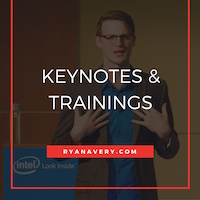
Motivation: Cultivated, Not Accumulated
In the pursuit of our goals, motivation can often feel like a fickle friend. Some days, it propels us forward effortlessly; other days, it seems elusive, leaving us grasping for ways to reignite our drive. What if we reconsidered motivation not as something to be accumulated, but as something to be cultivated—looking at it like a process rather than a possession?
What is Motivation?
Motivation is more than mere enthusiasm or willpower. It’s this complex interplay of factors that propel us towards our goals. Psychologically, it involves both intrinsic (internal desires and values) and extrinsic (external rewards or pressures) components. Understanding this duality can help us harness motivation more effectively. Motivation for me is understanding the root words and definition as mot– stems from the latin prefix mot, which means to move) and –ation is the suffix in latin which means to take action. So, by definition it means moving someone to action, it does not mean getting someone to pay attention!
So how do we do a better job of cultivating motivation in our daily lives?
Cultivating Motivation
1. Set Clear Goals:
Define objectives clearly. Ambiguous goals can lead to confusion and a lack of direction, dampening motivation. Break down big goals into smaller, manageable tasks to maintain a sense of progress. Remember the acronym SMART when setting goals!
2. Find Your Why:
Dig deep into the reasons behind our goals. Connecting emotionally with our objectives enhances intrinsic motivation. Ask yourself why achieving this matters to us—it’s often the emotional connection that fuels sustained effort. Have you read Simon Sinek’s Start with WHY?
3. Create a Positive Environment:
Surround ourselves with supportive people and environments that foster positivity and growth. Positive reinforcement and encouragement can significantly boost motivation. I have been very lucky to be around people in my life who support me and I love! Who is your biggest supporter?
4. Celebrate Small Wins:
Acknowledge and celebrate each step forward, no matter how small. This reinforces the sense of progress and achievement, triggering positive cycles of motivation. Sometimes I even celebrate the failures as it reminded me I am DOING something about my dreams, not simply wanting to do something! When is the last time you celebrated something?
5. Stay Flexible and Adapt:
Life is unpredictable, and setbacks are inevitable. Maintain flexibility in your approach and be willing to adapt goals or strategies as needed. Resilience is key to sustaining long-term motivation. These last two years have been beyond tough with losing my house to a fire, living in seven different places with my kids and trying to find stability for them and me, while also going through COVID and so much more! However, one thing I like to think about is not looking at pivoting rather, evolving!
6. Develop Habits and Rituals:
Establishing routines and rituals can create senses of stability and discipline. Consistent habits reduce reliance on fleeting bursts of motivation, making progress more sustainable over time. This is the hardest one for me, anyone else?
7. Seek Inspiration:
be surrounded with sources of inspiration—whether it’s reading success stories, listening to motivational speakers, or engaging with communities pursuing similar goals. Inspiration can reignite passion during challenging times. Where do you seek inspiration?
8. Practice Self-Compassion:
Be kind to ourselves during moments of low motivation. Self-criticism and guilt only exacerbate feelings of demotivation. Accept that motivation fluctuates and focus on nurturing yourself through those periods.
Motivation as a Process
By viewing motivation as a cultivated process rather than a finite resource, we empower ourselves to take proactive steps towards maintaining and enhancing it. It’s about continuous effort and adjustment rather than waiting for motivation to strike.
Remember, motivation isn’t a one-time acquisition but a journey of self-discovery and perseverance. By understanding what drives us, creating conducive environments, and adopting resilient mindsets, we can cultivate sustainable motivation. Embrace the process, celebrate progress, and remember—motivation thrives when nurtured consistently. So, let’s embark on this journey of cultivation, fueling our aspirations with determination and purpose.
















